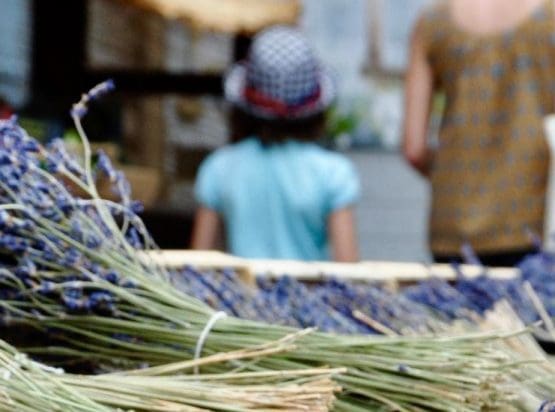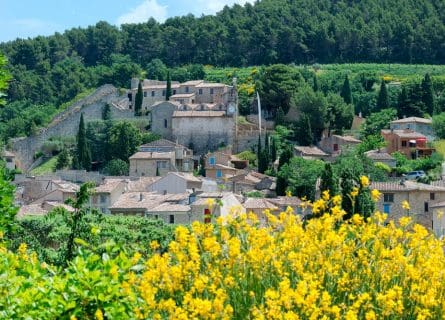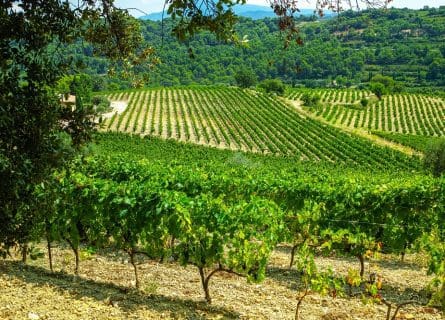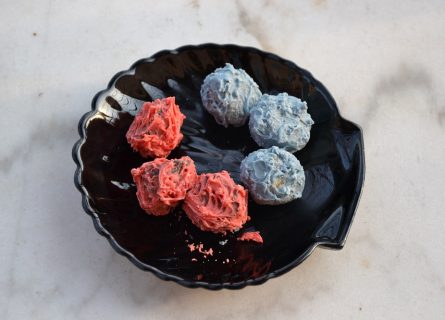Uncover Gigondas's vibrant flavors and culinary gems with our expert guides. Plan an unforgettable trip now!
Read more
EXPLORE ALL OUR RHôNE VALLEY WINE REGION GUIDES
Last updated: April 4, 2025
Every region in the Rhône Valley has a story to tell: Gigondas’ is perhaps the most inspiring. In the mid-20th century, obscurity swallowed the red wines of this tranquil commune as they were forced into the generic Côtes du Rhône-Villages appellation. As a result, growers struggled to achieve international recognition for their hand-crafted wines, denying Gigondas vital investment and the rewards of fame.
After years of campaigning, Gigondas finally threw off the shackles of the generic Côtes du Rhône-Villages appellation and earned its own designation in 1971. The positive effects of this decision cannot be underestimated; wine producers could market a single ‘brand’ entity under the appellation banner, attracting the attention of global buyers and sommeliers.
Since that time, Gigondas has scarcely put a foot wrong; wine quality has recently soared, often achieving parity with Châteauneuf-du-Pape. Yet prices have remained remarkably stable, only to the oenophiles’ benefit. As a result, Gigondas is a rare example of a wine region that offers endless pleasure while asking for little in return.
Discover More About French Wine

Viticulture has long been synonymous with Gigondas; even before Roman soldiers claimed Gaul, they planted the garrigue-covered hills of the southern Rhône with vines. In ancient times, both the Ligurians and the Greeks used terracotta amphora to produce wine – hipster winemakers, seeking a point of difference, have ironically revived this habit.
Yet it was the Romans who turned wine-growing into a nationwide industry following their invasion of western Europe during the mid-1st century BC. As the Romans consolidated their grip over the Mediterranean, they (rather predictably) named the wider region ‘Provincia Romana.’ It became a jewel in the crown of the Western Empire: an idyllic landscape bathed in luminous sunlight.
Indeed, they were smitten with the village of Jocunditas (Gigondas), which translates as ‘enjoyment’ in Latin. A most fitting moniker: Roman soldiers used Jocunditas for rest and relaxation during the empire’s zenith.
The Fall of Roman Influence and its Impact on Viticulture
Then, disaster! Rome’s hegemony teetered close to oblivion in the early 5th century as rival civilizations seized their chance for revenge. In the ensuing chaos, an increasingly well-armed and sophisticated collective of Germanic tribes attempted to appropriate former Roman territories. In the southern Rhône, the Vandals, Visigoths, and Ostrogoths all hedged their bets, yet the superior forces of the Frankish Knights defeated them.
Meanwhile, the Merovingian kingdom entered a period of rapid expansion, ejecting remnants of the Alemanni and Visigothic armies from France. At the same time, they took large swathes of land in northwest Italy. However, little is known about local viticulture during this early post-Roman period.
Church’s Influence on Southern Rhône Wines
Yet we know a great deal about the relationship between Christianity and the wines of the southern Rhône. In the Middle Ages, the Catholic Church assumed responsibility for managing wine production in Gigondas. The catalyst for this major shift was an exodus of popes from Rome in the 1300s; constant infighting encouraged the papacy to relocate to safer Avignon.
History remembers Pope John XXII as a key reformer during this period, improving viticulture and winemaking across the wider region. In the 16th century, written documents suggest that winemakers widely planted white grapes in Gigondas. However, today, they make no white wine there.
Gigondas’ Renaissance in the Modern Era
By the early 1800s, the potent reds of Gigondas were winning awards and charming consumers; several producers won gold metals at an agricultural fair in Paris in 1894.
However, a combination of phylloxera and economic recession did untold damage to the zone’s reputation in the mid-20th century. Gigondas suffered the ignoble fate of being shipped to Burgundy for the purposes of adulteration.
But in 1971, a renaissance occurred after the authorities awarded Gigondas its own appellation, previously subsumed under the far larger Côtes du Rhône-Villages designation. Growers have since invested heavily in the region, producing a credible rival to the heady wines of Châteauneuf-du-Pape.

Gigondas is one of the most captivating – and unspoiled – parts of the southern Rhône. The village sits in a stunning part of the valley, located in southeastern France. To the west is Vaucluse – Rasteau lies to the north of the appellation. Indeed, Gigondas is part of a cluster of wine villages that offer superlative quality without the usual expense. The landscape, cultural riches, and gastronomy attract millions of tourists annually.
The Ideal Mediterranean Climate of Gigondas
The climate also holds great appeal. In every sense of the word, Gigondas is a Mediterranean destination; vines thrive under the Provencal sun, with mild winters and increasingly hot summers inevitably encouraging high levels of phenolic ripeness.
In early fall, the sound of the cicadas combined with the heady smell of garrigue in the air as the sun sets is truly magical. But the heat can be so intense in July that shelter is best advised by lunchtime. Therefore, site selection is of the utmost importance in Gigondas. A poor choice can lead to unwieldy alcohol and blowzy red wines.
World-Class Terroirs and the Quest for Elevation
Fortunately, some genuinely world-class terroirs are in this corner of the Rhône. The appellation’s vineyards extend from the eastern boundaries of the River Ouveze up to the limestone slopes of the majestic Dentelles de Montmirail, which dominates the scenery of the village itself.
The zone’s calcareous soils and the abundance of higher-altitude climats are a recipe for fresh and balanced wines. As a result, many growers have become fixated on seeking out the highest elevations possible, coveting diurnal temperature variation and its positive impact on acidity levels. Altitude makes a difference in a zeitgeist where torrid summers are becoming normalized.
The uninitiated are usually surprised by what Gigondas offers; tasters often anticipate a concoction that is bold in alcohol, body, and brute force. Some bottles of Gigondas do conform to that stereotype of the southern Rhône.
However, they make a great deal of local wine gently, with wonderful freshness, elegant tannins, and bold aromatics. This is partly due to the cold soils and higher elevations of the appellation and partly due to winemaking.
The Dominant Grapes and Winemaking Approaches
Like Châteauneuf-du-Pape, Grenache is the star red grape of the zone, normally accounting for at least 70-80% of the cuvée (mono-varietal wines are quite rare in the region). Syrah and Mourvedre play the supporting roles, although the love affair with Syrah wanes as temperatures continue to rise.
According to the appellation rules, Gigondas may contain up to 10% of any grape variety permitted under the Côtes du Rhône framework, except Carignan. As elsewhere, however, approaches to fermentation will vary from grower to grower.
One school of thought emphasizes an extended maceration in oak vats (or concrete) to extract deep color and rich fruit from the berries; over-extracted wines can suffer from harsh tannins and unwieldy alcohol.
The Evolution of Winemaking Techniques
Yet, compared to 20 years ago, such muscular caricatures are rare. There are also the same arguments about using barrique in producing Gigondas, although many winemakers now eschew 100% new oak for their wines. Shadowing Châteauneuf-du-Pape, it is not uncommon to witness stems in the vat or a certain percentage of whole bunches. They also make a little rosé wine in Gigondas – utterly delicious in summer. It pairs very well with local dishes like Bouillabaisse.
It is tempting to dismiss Gigondas as one of the Rhône’s less interesting appellations. Historically, few critics described these rambunctious reds as “world-class,” often detecting a certain rusticity—especially in weaker vintages. But that was long before globalization forced winegrowers to up their game.
Perhaps the greatest advantage of our interconnected age is that there is no hiding place for incompetence. Consumers are much less forgiving than they used to be, which is no bad thing. If you purchase a bottle of Gigondas today, you can do so with total confidence.
Exploring the Diversity
Part of the attraction is the sheer variety of local expressions. The producer you choose dramatically impacts the style of Gigondas you’ll experience. Domaine Santa Duc crafts understated and almost ethereal wines, while St-Gayan offers wines with velvety concentration, full body, and noticeable alcohol content. Gigondas can be medium-weight or decadently sumptuous and fruity.
The Consistent Character of Gigondas Wines
Yet there are unifying characteristics in red Gigondas; despite the variances of style and character, the nose is typically open and expressive, with aromas of red berries, plum, herbs, and white pepper. The palate will be generous and long, supported by ripe acidity and moderate tannins. A mosaic of tertiary flavors can emerge with bottle age, including licorice, dark chocolate, mocha, and tobacco.
Meanwhile, the days of generic blends are over. The current fashion is to vinify wines from each plot separately, expressing the nuances of a particular terroir. The Burgundian spirit has captured the imagination of ambitious winegrowers in Gigondas. This is a thoroughly grown-up region that makes grown-up wines.
Discover grenache, a mediterranean grape that is dark-skinned red wine grape variety and an unlikely hero of a grape
Find out moreCinsault is a red wine grape that is important in the Languedoc-Roussillon wine region of France because of its tolerance to high temperatures.
Find out moreMourvèdre is a red wine grape variety of mysterious origin that's grown around the world, including the Rhone and Provence regions of France.
Find out moreSyrah is dark-skinned and perhaps the most underrated of the 'noble' red grape varieties.
Find out more
Southern Rhône gastronomy is as rich and diverse as the region’s superlative wines. Expect robust, intensely flavored dishes that warm the spirit and nourish the soul; health fanatics may struggle to keep those calories under control! Every village and subregion has its specialties – La Pintadeau de la Drôme (Drôme guinea fowl), renowned for its exquisite flavor.
In winter, chefs will pot roast the bird in a pungent concoction of red wine, wild herbs, and mushrooms. Meanwhile, those with a sweet tooth will adore Papelines d’Avignon: chocolates molded in the shape of the flowerhead of a thistle, filled with liqueur.
A Gastronomy Guide to Rhone Cuisine: Read more

Uncover Gigondas's vibrant flavors and culinary gems with our expert guides. Plan an unforgettable trip now!
Read more
Uncover Aix-en-Provence's vibrant flavors and culinary gems with our expert guides. Plan an unforgettable trip now!
Read more
Uncover Antibes' vibrant flavors and culinary gems with our expert guides. Plan an unforgettable trip now!
Read more
Uncover Avignon's vibrant flavors and culinary gems with our expert guides. Plan an unforgettable trip now!
Read more
Uncover Marseille's vibrant flavors and culinary gems with our expert guides. Plan an unforgettable trip now!
Read more
Uncover NIce's vibrant flavors and culinary gems with our expert guides. Plan an unforgettable trip now!
Read moreIf you would like us to customize an exclusive luxury tour, contact us and let us know your travel plans. We offer luxury food and wine tours for private groups of a minimum two guests. In addition, all of our private, chauffeured tours are available year-round upon request.

